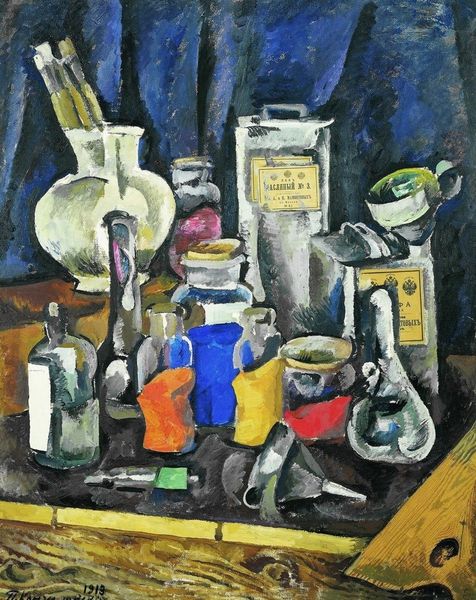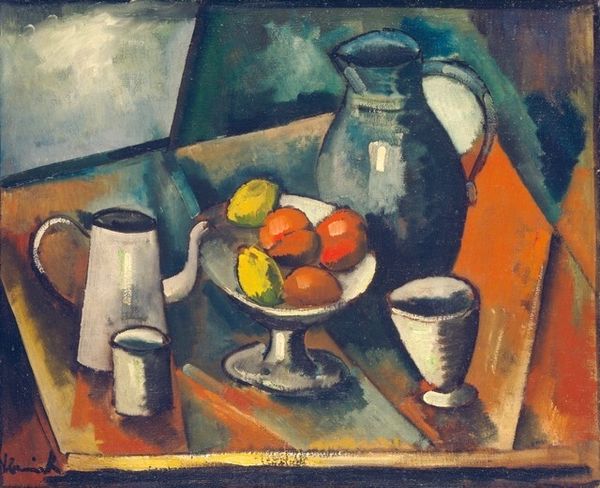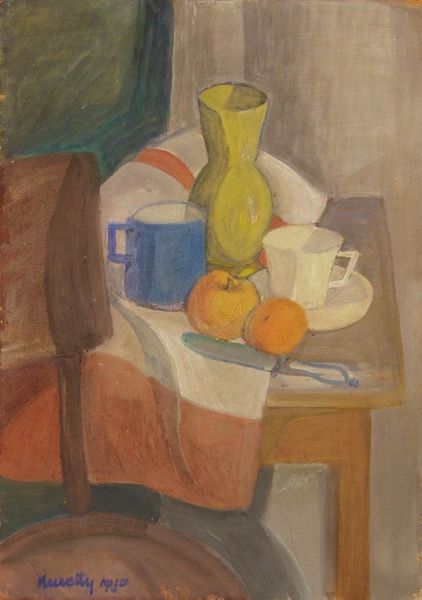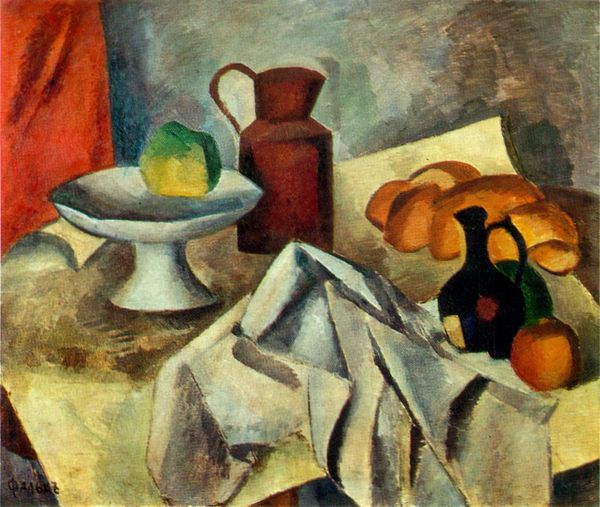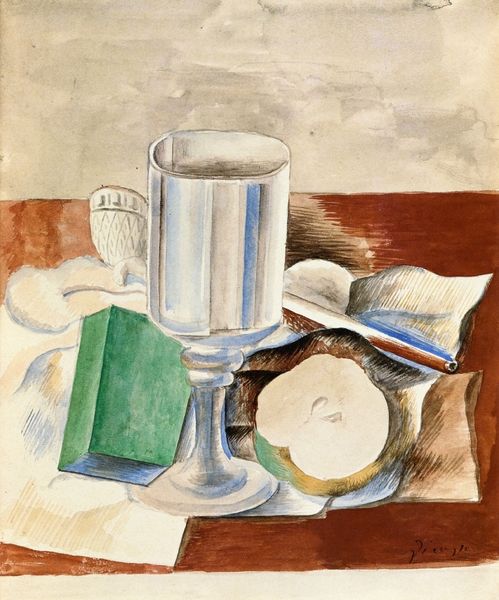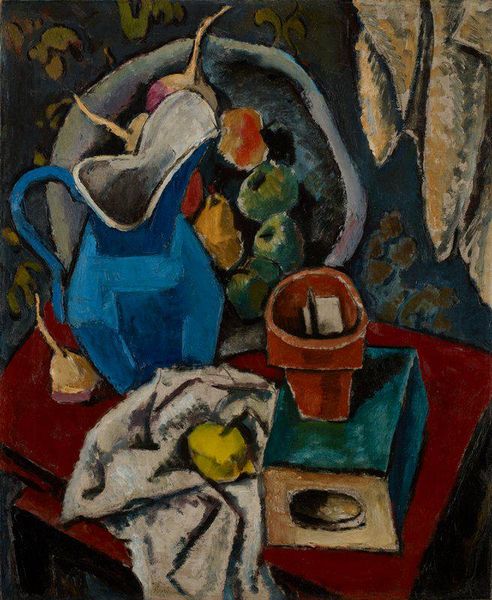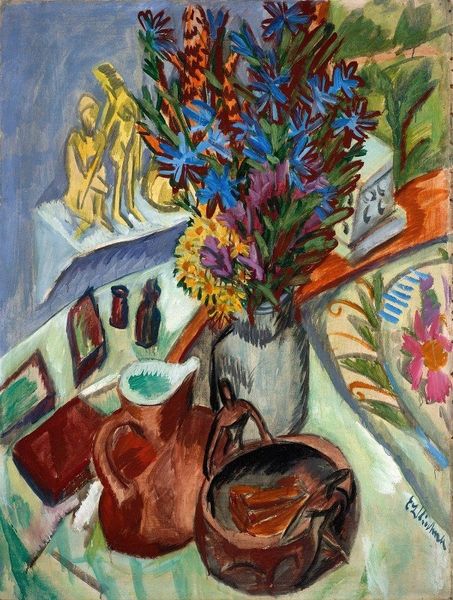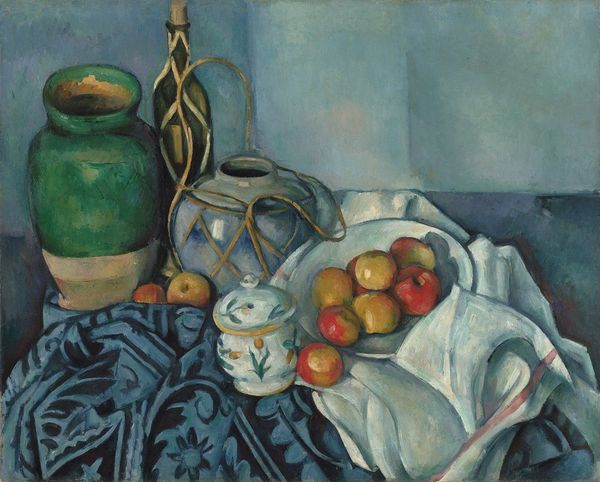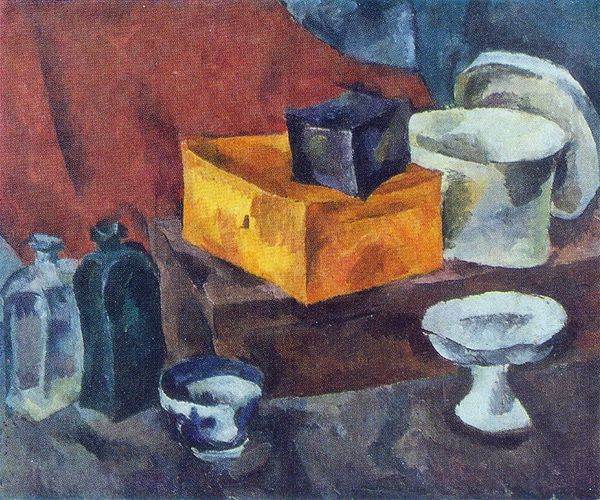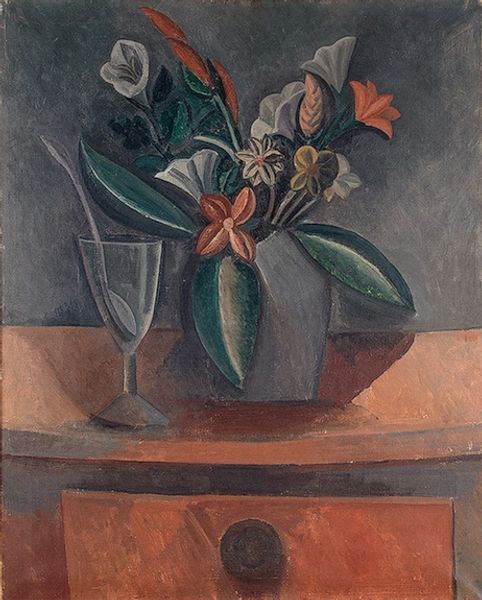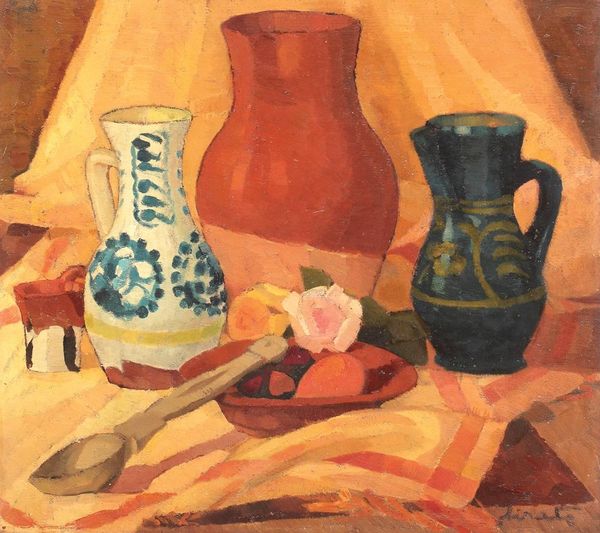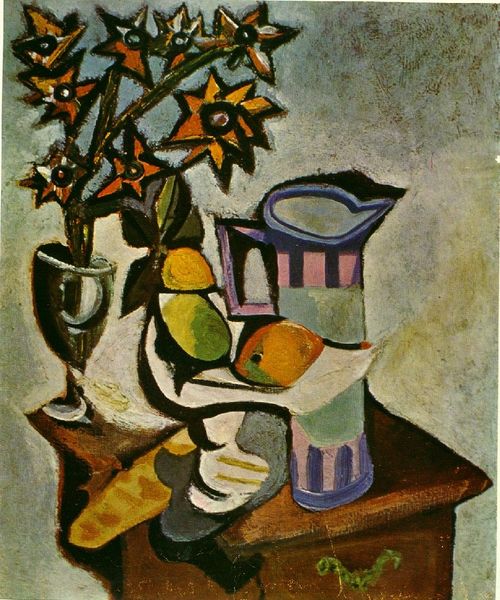
painting, oil-paint
#
cubism
#
painting
#
oil-paint
#
oil painting
#
plant
#
russian-avant-garde
#
modernism
Dimensions: 80 x 88 cm
Copyright: Public domain US
Editor: Konchalovsky's "Agave," painted in 1916, feels so…still. Like the objects are holding their breath. There's a curious collection of objects arranged in front of an intense turquoise backdrop: the agave itself, some books, what looks like a pipe... It feels intimate somehow. What leaps out at you when you see this? Curator: Well, aren’t we all just arrangements of objects holding our breath? It is curious, isn’t it? I’m drawn to the almost violent angles. The way he’s sliced the leaves of that agave, as if he’s taken a conceptual machete to nature. And that turquoise... a strange, unsettling comfort, like a memory fading at the edges. To me, it's not still. It's energy barely contained, straining at the seams of the canvas. What does that imply to you? That kind of compressed vitality. Editor: I see what you mean about the contained energy. Like the objects are vibrating. Almost as if he’s capturing a moment just before an explosion. Is that a result of the cubist influence do you think? Curator: Exactly! That tension between representation and abstraction, tearing apart and reassembling what we think we know. Cubism wasn't just about breaking things down; it was about showing multiple perspectives at once, about movement in stillness. What if the plant wasn’t just a plant, but an idea about growth, about survival in a harsh landscape. You could even say, a metaphor for Russia at that time of upheaval! Editor: So the items aren’t random! It's almost like a visual poem? I wouldn't have thought of the agave as symbolic of resilience before, but it makes perfect sense. Curator: Visual poems are what art should always be! See, you've got the eye for it! A painter notices how a simple houseplant, with a slice, offers so many insights and reflections. Editor: I’ll never look at a still life the same way again. Thanks, that was so enlightening! Curator: Oh, it was my pleasure. Perhaps now we should ponder where the painting is at? Perhaps it dreams, itself, of new sights.
Comments
No comments
Be the first to comment and join the conversation on the ultimate creative platform.
